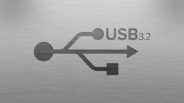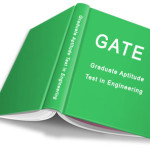Data transfer speed to be faster with new USB 3.2 port. Know the details.

Remember the days when it would take huge time to transfer data from one device to another storage device. With some innovations in data transfer ports, the data transfer speed improved and with this latest innovation, transfer rate is set to become faster. Data transfer from a smartphone to PC or between them and a hard drive is likely to get a lot faster in the next few months. USB Promoters Group, the body responsible for the development and adoption of USB as the primary standard for all data transfers, has announced a new USB 3.2 standard which is twice as fast as its predecessor.
USB Promoters group was founded in 1995 and has some of the leading tech companies such as Intel, Microsoft, Apple and HP as members. USB (Universal Serial Bus) is a cross platform technology which allows data or power transfer between two devices, such as a smartphone with a PC. It is also used to connect peripherals such as printers, keyboard or mouse to a PC.
According to the USB Promoters group, a USB 3.2 host connected to a USB 3.2 storage device via a superspeed USB 3.1 cable, will now allow data transfer at a speed of up to 20Gbps. What sets the new standard apart from its predecessor is the multi-lane architecture which allows up to two lanes of 5 Gbps or two lanes of 10 Gbps operation.
The current USB 3.1 standard’s biggest limitation is the single lane architecture which allowed transfer speed of up to 10GBps at most. So devices supporting two different speeds were using the same lane and one lane could muster speeds of 10Gbps at most.
USB 3.2 is also designed to take full advantage of the capability of the USB superspeed USB type C cables which already support multi-lane operation. USB Type-C standard was introduced in 2015 to overcome the limitation of the connector design and also pave the way for a multi lane data transfer. Superspeed USB Type-C cables were already designed for the multi-lane architecture.
The primary difference between USB 3.2 and USB Type-C is the design of the connector and the cable. Type C has no upper side and uses the same reversible connector at both ends. Before Type-C, USB 3.1 had two Types of connectors–Type A and Type B. The former was put at one end of the cable and was plugged into laptops and desktop PCs. The Type-B connector is put at the other end and is plugged into smartphones, tablets, cameras and hard drives. It is smaller in size, which is why they are also referred to as microUSB or mini USB.
However, to get the full benefit of this speed boost, a USB 3.2 host should be used with a new USB 3.2 device and a USB Type-C cable. The adoption of USB Type-C has been slow, but with the arrival of USB 3.2, it is likely to gather momentum. According to the USB promoters group, USB 3.2 standard is in the final review phase and will be released in the market at USB Developer Days North America event in September 2017. Devices with the new USB standard can be expected from next year onwards.

 Currency Convertor
Currency Convertor Post an article
Post an article Covid19 Updates
Covid19 Updates eLive Today
eLive Today
 sending...
sending...




